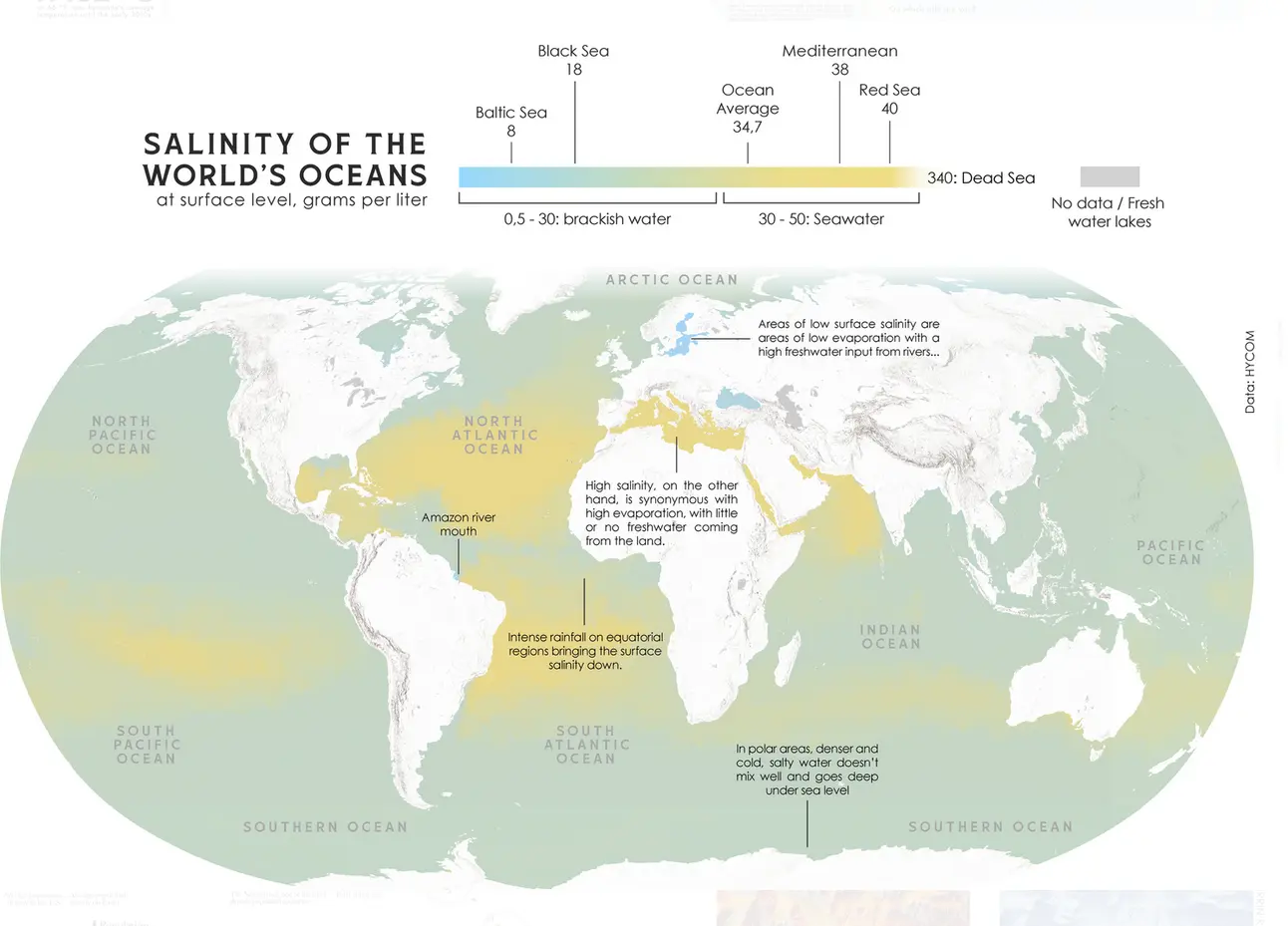https://www.perrinremonte.com/home-bis
Lower res version with updated scale

https://www.perrinremonte.com/expe-eng?itemId=m21a3at8pndyfg97b4lgs89eem8gg4
This explains why i float so easily down here in colombia but in maine i sink like a stone.
I’m surprised that the effect of major rivers is big enough to be visible on a global map, at least in otherwise saline areas (Amazon, Mississippi, Congo?). Interestingly, the world’s longest river (Nile) which drains into one of the saltiest seas (Mediterranean) doesn’t register on this scale at all.
The Nile’s average volume is not actually all that big. The Amazon puts more than 70 times as much water into the ocean, apparently. Although the Amazon is quite an outlier in that regard, being about as big as the 2nd through to 7th largest combined
I don’t understand how the Mediterranean shows as mustard on the map while on the scale its marked as green.
They fixed it in the meantime

https://www.perrinremonte.com/expe-eng?itemId=m21a3at8pndyfg97b4lgs89eem8gg4
Cool - i love updates with more sense
I’ll never forget the first time I went on holiday to Greece and jumped into the water. Saltiest water I’ve ever felt, ended up just swimming in the pool instead. Much better water up here in the north, even if it’s a bit cold.
Interesting, thanks.
Is thw equatorial concentration from planet spinning and higher density of salt water? Thats cool af
OP has actually posted an update that (indirectly) explains it! https://sopuli.xyz/pictrs/image/f2a9b56e-f915-4932-a35a-d4c3a6e472c9.webp
The equator is actually the less-salty bit in between the two high-salt bands. You’ll see the note that says that the less saline areas around the equator are the tropical latitudes that get a lot of rainfall. Because the equator is the most consistently-warm latitude, a lot of water evaporates there and is carried upwards, then falls back down as rain. That air can’t keep going up forever though, so it spills out to the north and south. By this point the water has fallen out of it and it has cooled, so it sinks back down and creates dry areas either side of the equator. We can see this as the two yellow bands on the map, and you’ll notice that the land in line with those is where we see deserts like the Sahara, the Kalahari, Arabian desert, and central Australia. And also lots of salt at the surface of the ocean, apparently, because there’s no rain falling on it.
Makes sense cool that we know this as well.
I think part of the gulf of California is the saltiest on earth





